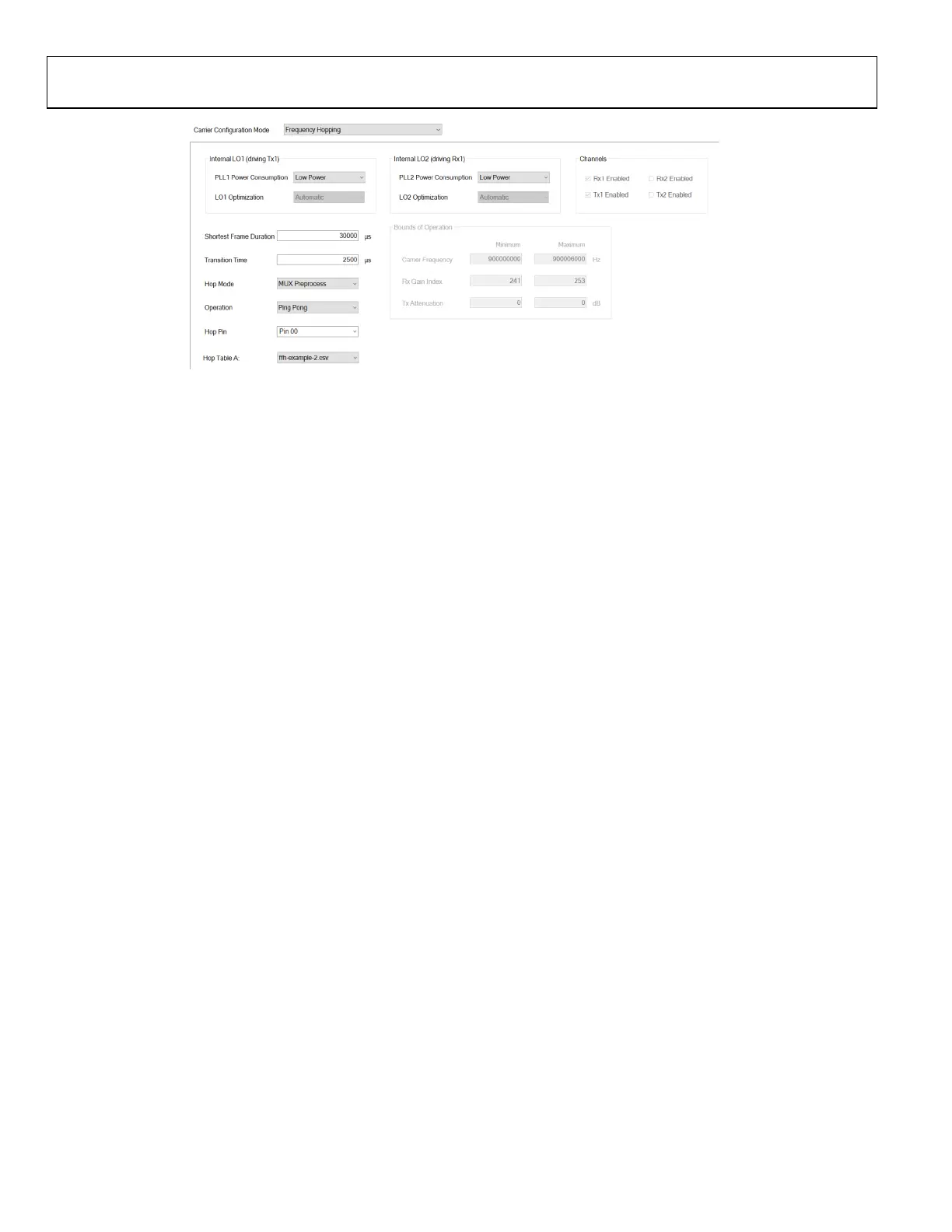UG-1828 Preliminary Technical Data
Rev. PrB | Page 102 of 277
Figure 105.
4. Specify the Hop Pin as Pin 0. By default it should be set to Pin 0.
5. Specify Hop Mode. Different profiles may have certain modes enabled/disabled
a. Mux Preprocess indicates two LOs are in use for frequency hopping, and the tables are preprocessed prior to hopping
b. Mux real time indicates two LOs are in use for frequency hopping, and tables are processed at the hopping stage.
c. LO retuning (real-time) indicates only one LO is used for frequency hopping and the tables are processed at the
hopping stage.
In this example we will use default Mux Preprocess
Note TES may not show all hop modes. However, user can find those modes in the API. For release 0.12.0, we only support LO
mux with preprocess mode.
6. Specify Operation.
a. Automatic Loop - Automatically increment through a frequency hopping table and wrap around once end has been
reached.
b. Automatic Ping Pong - Ping pong operation between ADI_ADRV9001_FHHOPTABLE_A and
ADI_ADRV9001_FHHOPTABLE_B. Automatically increment through one frequency hopping table and switch to
the other once end has been reached.
c. GPIO - Use DGPIO pins to index entries within a frequency hopping table.
Note for release 0.12.0, GPIO mode is not supported.
In this example, we will use default Ping Pong mode.
7. Load frequency hopping tables.
a. Here user can load two tables (table A and table B) or load only one table (table A or table B). We provide the
frequency hopping table examples in the GUI. Under /Example.
b. At this point user can edit the frequency tables in the files that will be loaded. User cannot edit values directly on the
GUI. Once values in the table are changed, the user should load the table again.
In this example, we load two tables.

